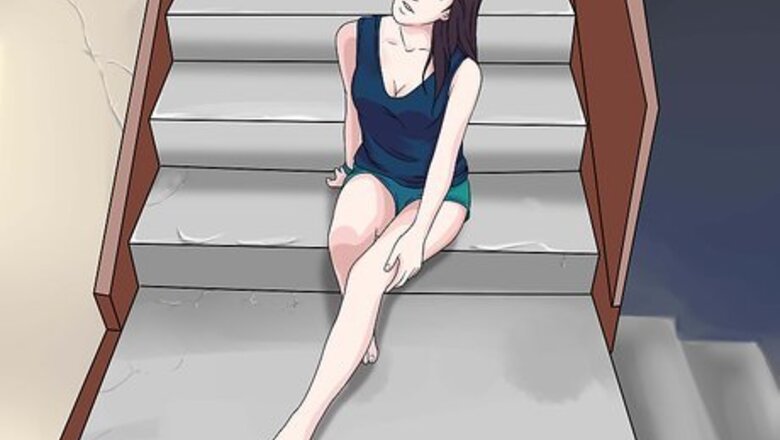
views
X
Research source
Shin splints are typically caused by overuse of the lower leg muscles from too much running, hiking, jumping or dancing. Because shin splints are essentially a type of repetitive strain, they can often be prevented by some common sense and simple home remedies. However, if you're a serious athlete, then consider getting some advice and/or preventative treatment from a healthcare professional.
Using Home Remedies for Prevention
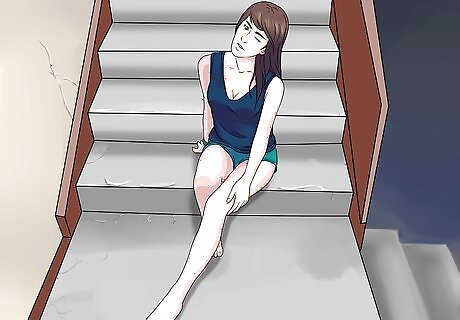
Change your routine or take a break from it. If your jogging, dancing, or workout routine frequently causes you shin pain, consider doing fewer repetitions, using lower weights, or changing your running circuit. For example, refrain from running up hills or on hard surfaces, or stop doing leg presses at the gym for a while and see how your symptoms respond. Consult with a personal trainer if need be. Recognizing a musculoskeletal injury in its early phase and allowing it time to heal by resting is the best way to prevent acute injuries from progressing or becoming chronic (long term). Occupations that increase the risk of shin splints include forest rangers, field engineers, firemen, military recruits, certain referees (such as soccer or basketball), roofers and some types of construction jobs. If your leg problem is work-related, talk to your boss about switching to a more sedentary activity for a few days so your lower leg muscles can recuperate.
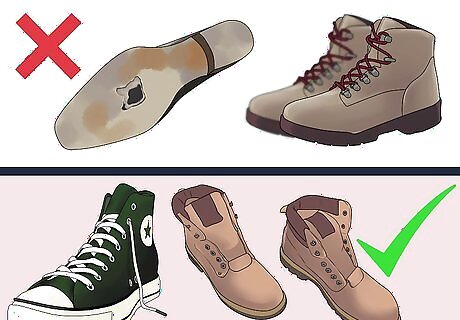
Change your shoes or boots. Look for well-fitting, lightweight shoes and boots with good arch support and flexible soles if you want to prevent shin splints. Shoes with poor arch support allows your feet to collapse inwards, which puts stress on your tibia and knee. If your shoes make your feet too heavy, then they can strain the muscle in your shin that is responsible for lifting your foot when you walk or run. Avoid "negative heel" shoes or sandals that orientate the foot such that the heel sits lower than the forefoot — they put too much strain on the shin muscles. Instead, pick shoes and boots that are elevated in the heel by about 1/4 or 1/2 inch. If you're a serious runner, replace your shoes every 350–500 miles or after three months, whichever comes first.
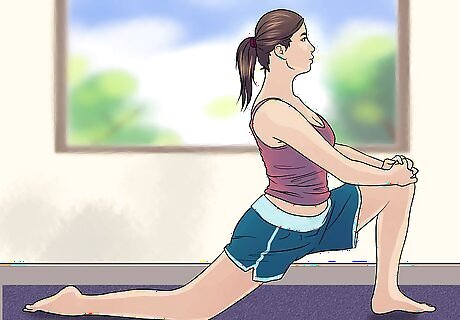
Try stretching your shin muscles. This may keep the discomfort from getting worse, especially if you address the problem early. Try to plantar flex your foot, which means pointing your toes and contracting the arch of your foot. Try the fencing stance, with your affected leg outstretched behind you and your toenails touching the floor. Put pressure down on the top of your foot and feel the stretch in the front of your shin. Use slow, steady movements and remember to breathe deeply during your stretches. In general, hold stretches for about 30 seconds and repeat five to 10 times daily until the shin pain fades away. Stretching directly after the application of moist heat might help because your shin muscles will be more pliable.
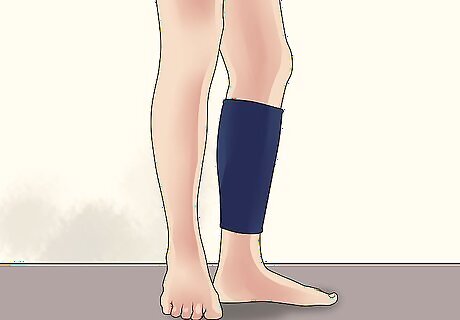
Use a supportive bandage. If you feel some tightness or discomfort developing in your shin during exercise, then in addition to scaling back your intensity, consider wrapping the area below your knee with a supportive Tensor or Ace bandage or even a neoprene sleeve. Elastic bandages and neoprene sleeves provide support and warmth to the shin muscles, and may help bind the tendons up against the tibia to prevent stress and strain. Keep wrapping your lower leg until the tenderness disappears, which usually takes three to six weeks. Tensor or Ace bandages and neoprene sleeves are inexpensive and widely available in drugstores.
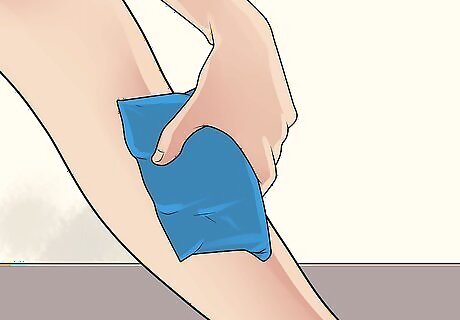
Apply ice or frozen gel packs. The application of cold therapy is an effective treatment for essentially all strain-type injuries, including shin splints, because it reduces inflammation and dulls pain. If your shin muscles flare-up after physical activity, then apply ice to the most tender area for about 15–20 minutes every two to three hours until the pain and swelling subside. Compressing the ice against your shin with a bandage or elastic support is even more efficient for controlling inflammation. Always wrap ice cubes or frozen gel packs in a thin towel to prevent frostbite on your skin. If you don't have ice cubes or gel packs, then use a frozen bag of peas or corn from the freezer.
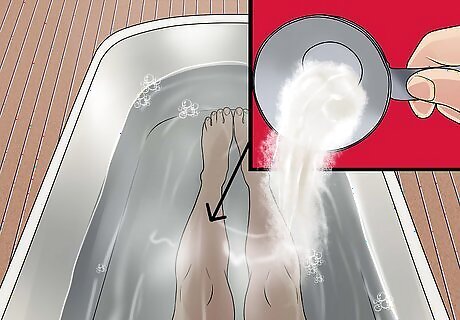
Take an Epsom salt bath. Soaking your legs in a warm Epsom salt bath can significantly reduce the achy pain and swelling associated with mild-to-moderate muscle strain. The magnesium component in the Epsom salt helps the muscles relax and pull inflammation out of the tissues. Alternatively, you can apply moist heat to your shin if you're unable to soak your legs — microwaved herbal bags work well and are sometimes infused with essential oils that have relaxing properties. If inflammation is a particular problem in your lower leg and it doesn't abate with a salt bath, then follow up with cold therapy until your shin gets numb (15-20 minutes).
Seeking Professional Help
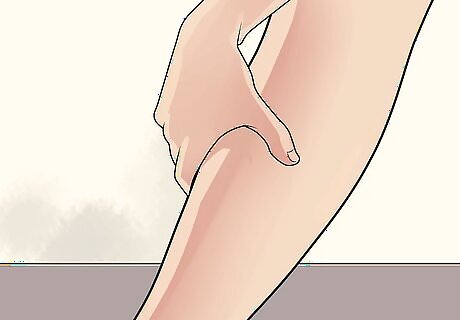
Get a lower leg massage. Muscle strains happen when the muscle fibers are stretched too far, causing them to tear. This leads to pain, swelling, and spasms. A deep tissue massage on your lower legs can help ease inflammation in the area. It may also help prevent a strain because it will reduce tension. Start with a 30-minute massage, focusing on your shin muscles and calves. Allow the masseuse to go as deep as you can take it without wincing. Drink lots of purified water after any massage in order to flush out inflammatory by-products from your body. Failure to do so might trigger a mild headache or malaise. As an alternative to a professional massage, consider using a handheld vibrating massager on the soft tissues of your lower leg. Some research indicates that vibrations help to relax and strengthen musculature while stimulating nerves to reduce pain.
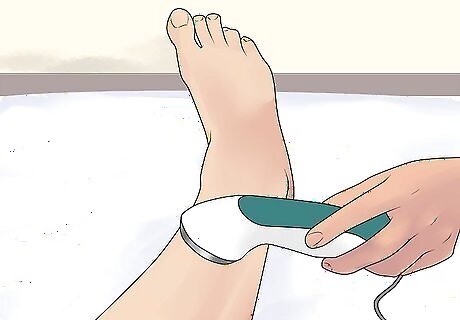
Try ultrasound therapy. Therapeutic ultrasound is a therapy used by some doctors, chiropractors and physiotherapists that reduces inflammation in soft tissues and stimulates healing. Ultrasound machines emit sound frequencies through special crystals (although you can't hear it) that positively impact injured cells and tissues within the body. As a preventative treatment, ultrasound may be able to stop the progression of shin splints if you start to feel some mild tenderness in your lower legs. Treatments are painless and usually last five to 15 minutes, depending if your leg condition involves significant inflammation or not. Although a single treatment is sometimes sufficient for mild strains, more than likely it will take three to five treatments to notice significant results.
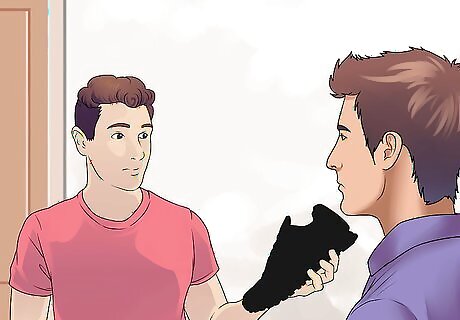
Schedule a consult at a running store. High-end running stores sometimes employ people who are qualified to assess your running gait, arches, and the wear patterns of your old running shoes. They typically aren't doctors or physiotherapists, but they are usually experienced runners or fitness experts who can give you sound advice on what shoes to buy, which may help prevent shin splints and other conditions of the legs and feet. You'll get help with selecting the best running shoe based on your foot type (flexible pronator vs. rigid supinator). You may have to run or walk over a computerized force plate as part of your gait assessment.
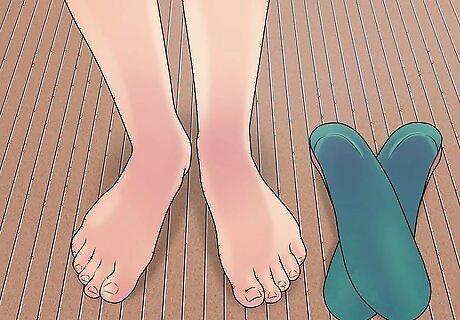
Have some custom orthotics made. Another preventative strategy for shin splints is getting some custom made orthotics for your shoes and/or boots. Orthotics are semi-rigid sole inserts that help support the arch of your foot and promote better biomechanics while standing, walking and running. By providing cushioning and some shock absorption while you run, walk and jump, orthotics can help reduce the risk of developing shin splints. Medical workers who build and sell orthotics include podiatrists, as well as some physicians, chiropractors, and physical therapists. You'll likely need to remove the factory insoles from your running shoes in order to fit the orthotics in.
Diagnosing Shin Splints
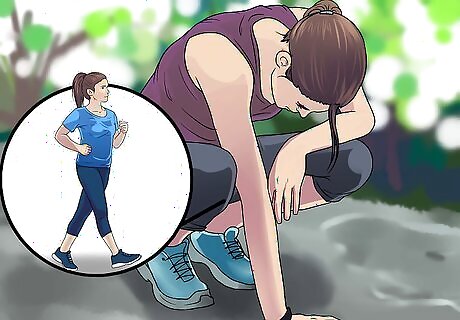
Understand the cause. Shin splints are usually caused by a strain on the leg muscles below the knee, particularly the tibialis anterior, which is responsible for lifting your foot while you walk and run. Sometimes shin splints also involve inflammation of the tibial periosteum, the thin sheath of tissue that wraps around the tibia or shin bone. In rare cases, shin splints may also involve hairline fractures of the tibia or blood circulation problems in the lower leg. Shin splints are not considered a serious type of injury, although they can generate lots of pain and hinder the ability to run, or even walk. Risk factors for shin splints include intensive running and hiking (especially on hills), inadequate footwear, flat feet, and poor biomechanics or technique. Military recruits, professional dancers and athletes such as soccer and basketball players have higher incidence of shin splints.
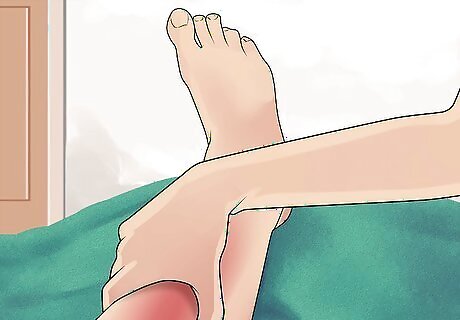
Know the symptoms. Shin splints typically include tenderness, soreness, inflammation, or pain along the inner part of your lower leg. You might also have difficulty lifting your toes off the ground. You may notice pain during the initial part of a workout or activity—it may ease once your muscles are warmed up, then reappear near the end of the session. The pain is often described as dull and annoying, but with continuing trauma, it can become worse. Shin splints often feel worse in the morning because the soft tissues (muscles and tendons) tighten overnight. Shin splints also flare-up when you forcibly try to lift your foot up (dorsiflex) against resistance. The location and type of the pain is often enough for a correct diagnosis of shin splints, so x-rays, an MRI or diagnostic ultrasound are rarely needed for confirmation.
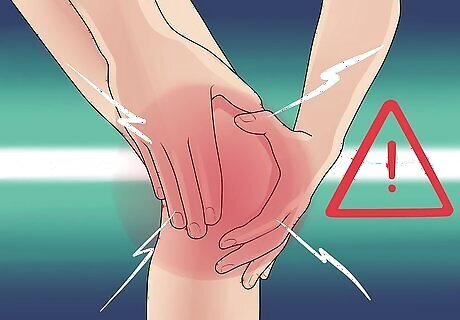
Realize the complications. Shin splints can do more than just cause pain in your legs. Over time, other joints can become negatively affected. Not being able to lift your foot properly when you're walking, running, or jumping causes you to overcompensate in other areas, such as your knee, hip, and low back. This increases the risk of strain or sprain injuries in those locations. It's important to differentiate (by a qualified doctor, ideally) between other lower leg issues that have overlapping symptoms with shin splints, such as bone fractures, muscle compartment syndrome, popliteal artery entrapment, venous insufficiency and nerve entrapment. Because females have a higher incidence of diminished bone density and osteoporosis, they are more likely to develop severe shin splints and stress fractures of the tibia.



















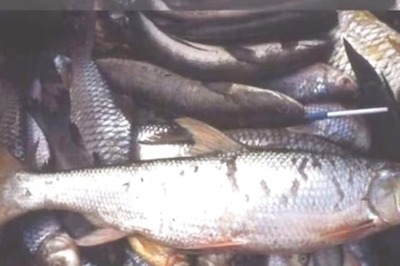
Comments
0 comment